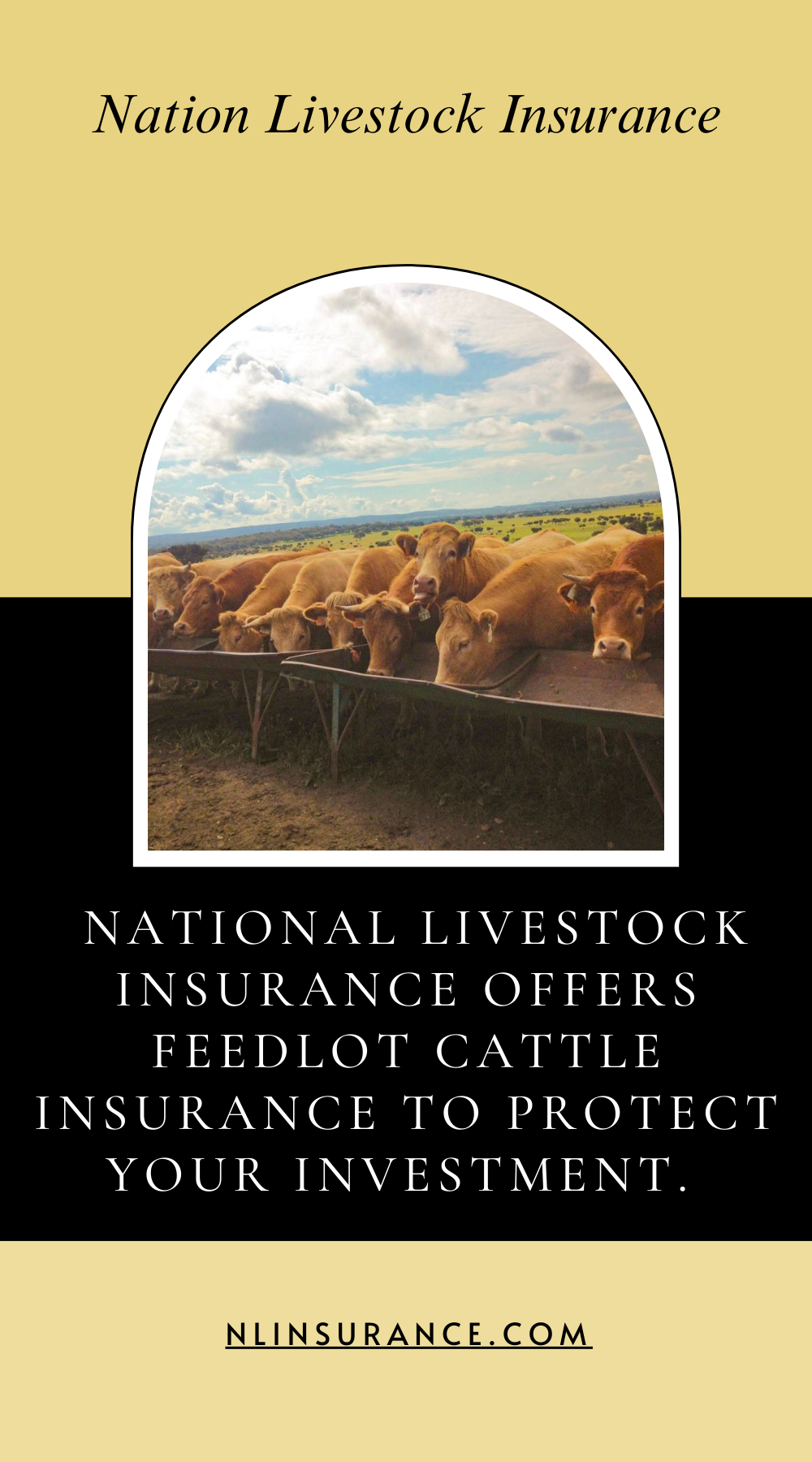Out in Cactus, Texas, a tight-knit community in Moore County, surrounded by rolling feedlots, feeding cattle isn’t a business, it’s a way of life. With large operations dotting the landscape and cattle filling pens under big Texas skies, it’s easy to forget how quickly nature can change things. That’s why Feedlot Cattle Insurance from National Livestock Insurance is built for life in Cactus. It protects your cattle's market value when disaster strikes, covering risks like heat, cold, storms, barn collapse, theft, and weather-related cattle loss through a valuation-based policy.
This insurance doesn’t cover vet bills or illness treatments. It covers cattle deaths from specific named events. If an insured animal dies from fire, lightning, windstorm, flood, drowning, building collapse, theft, vandalism, or snow smothering from a blizzard, you'll be paid the amount listed in the valuation schedule. Optional coverage adds vital protection for hypothermia, contaminated feed or water, and even carcass removal, reflecting real dangers cattle feeders face here.
Cactus has a typical High Plains climate, hot summer days with highs near 95 °F and cold winter nights dropping below freezing. That heat, combined with humidity and confinement, can stress cattle. Extended periods above 90°F mean your herd is at risk of heat-related problems.
Winters bring whipped-up cold and occasional blizzards. Storms in nearby Panhandle towns have buried yards under snowdrifts up to 30 feet deep, creating smother risks alike in Cactus. Cattle trapped in pens under snow risk suffocation fast. Rainfall comes in bursts, about 13 inches annually, with July being the wettest month. Flash floods can fill pens overnight.
High winds and lightning strikes are common, too. A bolt could ignite your barn, or wind could collapse feed bays and fencing, even on a clear day. Theft and vandalism in remote yards complete the list of real threats.
Rather than a flat rate per head, valuation-based coverage means you get paid the actual market value listed in your schedule. If a pen of cattle drowns in a flash flood, you’re compensated based on current value, not what you paid or their salvage value. That flexibility matters when losses hit.
Hypothermia coverage helps when cattle die from unexpected cold snaps, even without snow.
Contaminated feed or water protection helps if a tank breaks, rain runoff pollutes feed, or algae growth spreads toxins, common after seasonal spikes.
Carcass removal covers what it takes to clean up after a loss, which can be expensive if you’re disposing of dozens or hundreds of dead animals.
We don’t issue payments for losses caused by neglect. You need to practice good pen and cattle care: maintain drainage, shade, feeding systems, secure fencing, inspect barns, clean troughs, and shelter cattle when storms hit. Clean feed and water tanks after weather events. Monitor cattle for heat or cold stress. Your care preserves eligibility for claims.

.png)
Moving cattle from the feedlot to the nearby auction introduces more risk. Haul smart with well-ventilated trailers, secure partitions, temperature checks, and water breaks. Insurance covers livestock death in transit from named causes if you transport responsibly.
We don’t just sell policies and then ghost. We speak before the seasons hit. Storm readiness in April, flood prep in July, and smother prep in January. When weather threatens, hot, cold, or wet, we remind feeders to act. Insurance becomes extra value, not just paperwork.
When a covered loss happens, act fast. Take photos, get vet or field reports, gather weather data, and record. Then call National Livestock Insurance. An adjuster familiar with High Plains feedlots will verify causes and losses. Payment is issued based on your cattle schedule and optional riders selected. The Hartford’s A+ rating ensures claims are paid fast, even during weather events or after hours.
Cactus feedlots vary in size, from family-run pens to yards processing thousands. Valuation schedules adapt by head type and weight. You pick the riders that matter most, scale up as you grow. No cookie-cutter pricing here. It fits your herd and your pocket.
National Livestock Insurance has served cattle feeders across the High Plains since 1972. We know cattle, feedlot life, and Panhandle weather. Our Amarillo-based team works directly with feeders, advising on infrastructure, pen design, feeders, and storage methods to support coverage. We work shoulder-to-shoulder through losses.
Our coverage is backed by The Hartford—A+ rated by Best’s—which matters when storm season spares no one. With that financial backing, you can trust that if your claim meets policy parameters, you’ll get paid.
Life in Cactus is wide-open and wide-ranging, from high heat to blizzards, from floods to windstorms. Feedlot Cattle Insurance from National Livestock Insurance offers tailored protection when cattle die from named hazards. Your payouts reflect the valuation schedule, and optional coverage fills gaps real feedlotters face, heat, cold, contaminated feed, and disposal. Care protocols support claims, and the team walks with you through nervous seasons.
Insurance isn’t just a shield, it’s part of continuity. When disaster strikes, your cattle can be replaced and your yard rebuilt quickly. You stay feeding, keep contracts, and ride out the plains’ moods.
Let’s build your feedlot’s safety net. Call us in Amarillo or reach out directly. We’re livestock people protecting livestock operations, together.